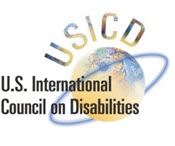2.3 Greater Disability Inclusion in ICT: Assessing Article 32 Implementation
Intended Audience: Persons with disabilities, Organizations of Persons with Disabilities (OPDs), Local Governments, Local NGOs, International NGOs, International governmental organizations (INGOs), Donor organizations (National, international)
Click here to download a power point version of this lesson to customize for your training purposes.
Please note: Credit should be given to the US International Council on Disabilities and Rehabilitation International. Important Resources: Web Content Accessibility Guidelines 2.0 (WCAG) Marrakesh Treaty Signing/Ratification/Accession Digital Accessibility Decennial Call for Action Digital Regulation Handbook and Platform 2020 The Log-in Georgia Project (World Bank) Bridging the Disability Divide Through Digital Technologies (World Bank) The ICT Opportunity for a Disability-Inclusive Development Framework (United Nations) Toolkit on Disability for Africa (United Nations) DARE Evaluation Framework on Accessible ICTs (G3ict) E-accessibility Policy Toolkit (G3ict) I Want to Say Documentary - full 27 minutes (Hacking Autism)
Key Learning Objectives in this module:
- Acknowledge the importance of unrestricted access to assistive technology for everyone.
- Understand the connection between assistive technology access and the Convention on the Rights of Persons with Disabilities (CRPD) and the Sustainable Development Goals (SDGs)
- Identify the barriers that inaccessible technologies pose to persons with disabilities
- Consider strategies for advancing inclusive information and communication technology through disability inclusive development
Click on the video under the lesson tab (see above) to begin the lesson. Captions are included.
